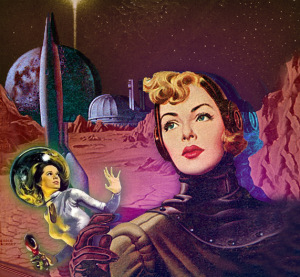
My most recent essay is about why an all-female Mars mission makes good economic sense. The upshot: women, on average, are smaller than men and require much less food. On a round-trip Mars mission, you’d want to bring your food with you, all 2.5 years worth of it. The weight adds up. The more your payload weighs, the more fuel you need, which adds weight of the whole system, which in turn requires more fuel, which costs more money. One way to save dollars? You could cut the payload weight of food in half by flying smaller women instead of larger men.
Of course, there’s much more to the story. It includes the surprising history of female astronauts in America, dating back to the 1950s and the more recent cost-benefit research of female astronauts in the early 2000s. And there’s also my personal experience as a HI-SEAS crew member, which is what gave me the idea for the essay in the first place.
The piece ran in Slate and was accompanied by excellent artwork by Juliana Jeménez Jaramillo. The internet responded with excitement and words. Jokes were made and accusations of discrimination against men were levied. In the end, I thoroughly enjoyed the experience. I especially liked turning our image of a “manned” mission to Mars on its head. It’s so common to assume any sort of space expedition will be composed of mostly men. Now, hopefully, people who read my piece can also easily entertain one that’s mostly women.
In the days that followed the essay’s publication, I was invited to do a number of radio interviews for programs including BBC World Service, a show on Sirius radio, a.m. and f.m. shows, and All Things Considered on NPR. And the absolute highlight: the story was turned into a limerick for Wait Wait …Don’t Tell Me.
